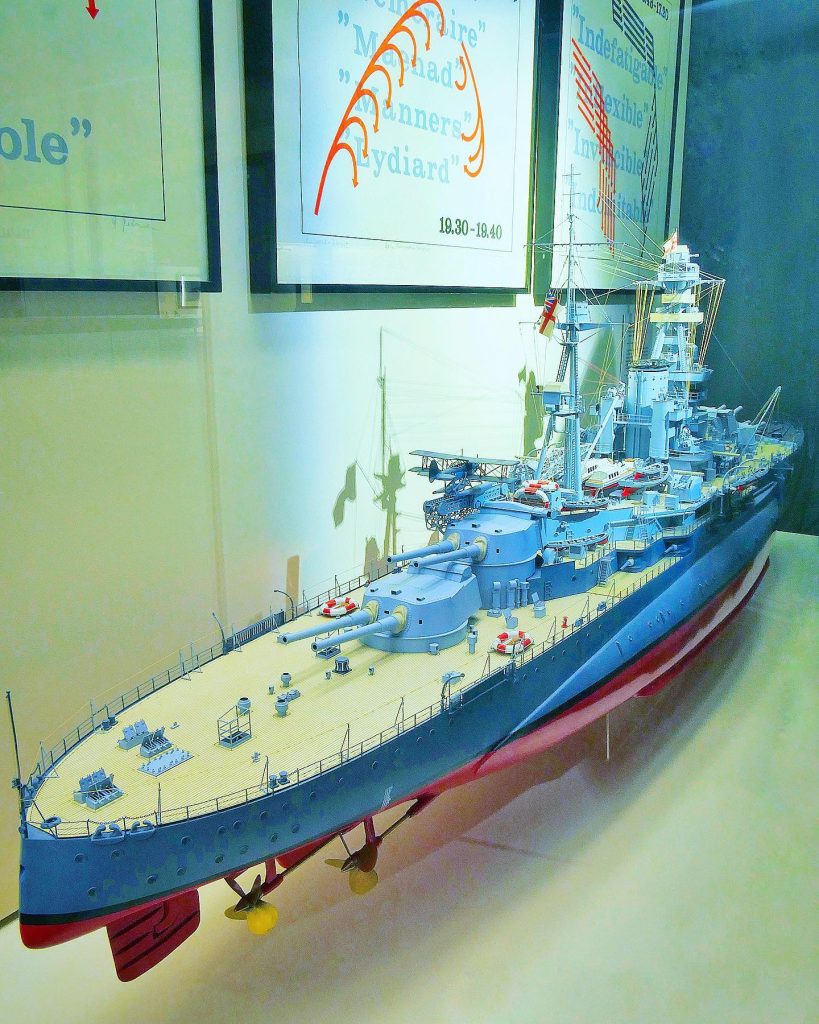
Dreadnought Battleship HMS Royal Oak. This model, built by Helmut Schwarzer in a scale of 1:100, is part of our exhibit on the Battle of Jutland on deck 5 of the museum.
The 8th ship of the British Royal Navy named HMS Royal Oak was a dreadnought battleship of the Revenge-class. This ships were smaller, slower but cheaper to produce than the previous Queen-Elizabeth-class. The construction of the Royal Oak started in January 1914 at the Devonport Royal Dockyard. She was launched in November of that same year and commissioned on May the 1st 1916, at time to participate in the Battle of Jutland.
Between May the 31st and June the 1st 1916 the British Grand Fleet and the German High Seas Fleet clashed in the North Sea during the largest naval battle of World War I, and the last in history to be fought mainly by battleships. Almost 10.000 died and almost 175.000 tons of ships were sunk in a battle that did not change the status quo of the war. HMS Royal Oak was in the heat of the battle, but remained undamaged. She survived the war and underwent a thorough modernization in the early 1920s. In 1926 she was the showplace of „The Royal Oak Mutiny“. This was actually a personal discussion among officers that got out of hand, ended in front of a court martial, and was heavily ridiculed by the international press.
She participated in the Spanish Civil War in 1937, when she escorted ships transporting refugees. A new modernization of the ship took place in the late 1930s, but this could not solve her main problem: with a top speed of less than 20 knots, she had become truly obsolete.
The 25 years old ship remained anchored at the naval base of Scapa Flow. The base had been deemed impenetrable by submarines, which was terribly wrong. On the 14th of October 1939, Royal Oak was torpedoed by the German submarine U 47 an sank in 13 minutes. A total of 835 men died in that action and her wreck is a officially designated war grave. This has complicated the removal of the fuel and dangerous materials contained in the wreck, that have been an ecological hazard for decades.
This model, built by Helmut Schwarzer in a scale of 1:100, is part of our exhibit on the Battle of Jutland on deck 5 of the museum.
